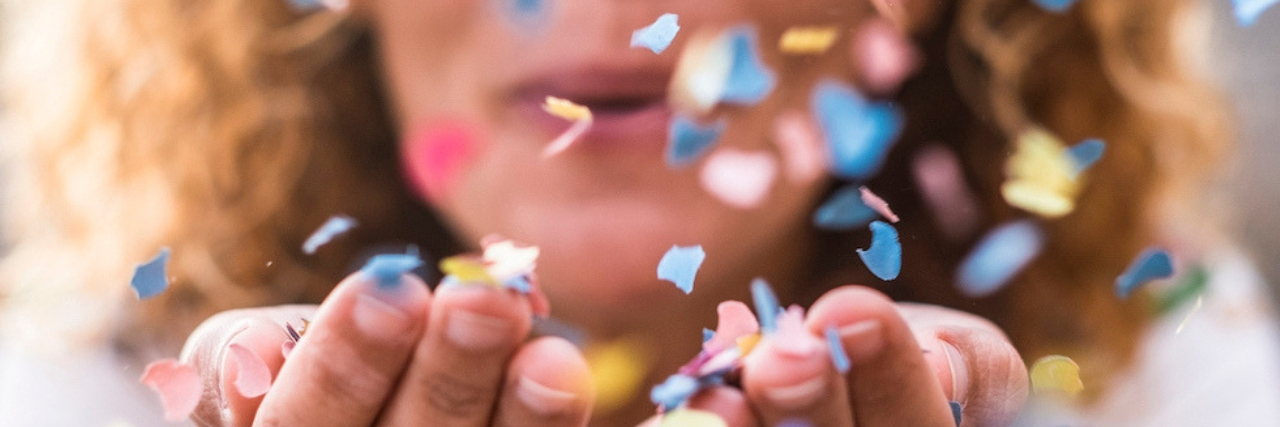It’s commonly accepted that the way one experiences loss changes over time. It’s been about eight years since I lost my mom to suicide, and the grief I experienced several months in — that vertiginous sensation that the earth had disappeared from under me — was vastly different than how my grief felt a year later, or the year after that, or now. My grief has deepened, shifted and almost entirely become easier as time has moved on.
But now that it’s been a minute, as the kids say (my use of slang has also deepened with time), it occurs to me I no longer mourn my mom as a single person, but the many different versions of her.
Depending on the moment a memory pops up, I may be thinking of Funny Mom: the one who determined during my childhood that she didn’t have to tickle me to throw me into rapturous hysterics, but merely waggle a finger while arching an eyebrow and quietly asking, “Tickle?”
It could be Swashbuckling Mom, who during a car ride, in response to my nervous, “Mom, watch that car,” often responded, “Let ‘em watch me!”
It could be Fiercely Protective Mom, who during my grandmother’s hospital stay after a brain tumor operation, methodically worked her way up a network of friends of friends of friends until she reached someone on the hospital’s Board of Directors, charming and delightful despite her inward panic for her mother, until she secured a belated, sheepish call back from the arrogant doctor who had failed to read my grandmother’s chart and tried prescribing her a medication that would have killed her. He’d be more careful and communicative moving forward, he groveled.
It could be Sad Mom, unable to leave her room for days, awash in depression and despair.
It could be Chaos Mom, who occasionally left screaming, violent, suicidal messages for my friends, friend’s parents, bosses and girlfriends over the years when she was out of control and at the mercy of what I later came to understand was a severe personality disorder.
I always assumed that if Mom ever did take her own life, I would be besieged by nightmares in which the worst of her selves would torment me from the afterlife. Mercifully, this hasn’t been the case. She is more often than not, in dreams, a slightly offstage presence, occasionally accompanied by a mild sense of half-remembered anxiety.
I find that as time moves on, it is more often Funny Mom, Loving Mom, Inseparable-Best-Friend Mom who bubbles up to the horizon of my memory, while the guises of Sad Mom and Chaos Mom gradually fade away, more and more distant. It is her Real Self, the person she was unencumbered by her mental health condition, who rises to the surface, with me, thankfully, forever.
When I first attended an International Survivors of Suicide event several years ago, shortly after I began working for the American Foundation for Suicide Prevention (AFSP), I was struck not only by all the people whose losses were still fresh, all of us bonded by shared understanding, but by those who had lost loved ones to suicide many years before and who attended the event every year. Their strength was enviable.
Grief — particularly in relation to suicide — changes. It also multiplies, divides and softens.
The good news is, no one has to experience it alone.
In addition to International Survivors of Suicide Loss Day each year on November 17, which has events around the world as well as a day-of Facebook livestream for those who can’t attend in person (info below), the American Foundation for Suicide Prevention (AFSP) has the Survivor Outreach Program, which connects the recently bereaved with trained volunteers who are themselves survivors of suicide loss. You can find a support group. You can connect with others at Out of the Darkness Walks across the country. AFSP has chapters in every state, which can connect you to local resources.
There is a vibrant community of those affected by suicide not just in person, but online. The Mighty, as I’m guessing you know if you’re reading this, has a wealth of first-person accounts involving mental health. You can jump right into the conversation via their new platform. You can also check out AFSP’s blog for posts specifically regarding suicide, and get inspired to write your own on the new #Stories2Connect “Sharing Your Story” page, which features examples, inspiration and safe storytelling guidelines. You could even just go on your favorite social media site and interact with others by searching hashtags like #RealConvo, #Bethe1to and #StopSuicide.
All the years I spent trying to support my mom in any way I could while she fought her own incredible battle, I felt so alone.
But I wasn’t alone, and neither are you.
International Survivors of Suicide Loss Day is November 17. To find a Survivor Day event near you, click here. Those unable to attend in person are encouraged to tune in for Survivor Day Live, an online event taking place at 4:30pm on November 17 at facebook.com/AFSPnational.
Getty image via simonapilolla

